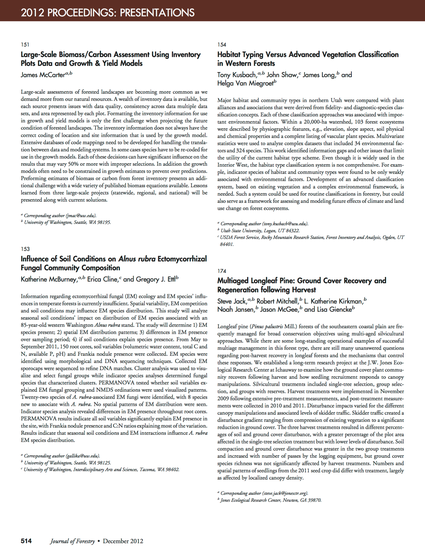
Article
Habitat typing versus advanced vegetation classification in western forests
Journal of Forestry
(2012)
Abstract
Major habitat and community types in northern Utah were compared with plant alliances and associations that were derived from fidelity- and diagnostic-species classification concepts. Each of these classification approaches was associated with important environmental factors. Within a 20,000-ha watershed, 103 forest ecosystems were described by physiographic features, e.g., elevation, slope aspect, soil physical and chemical properties and a complete listing of vascular plant species. Multivariate statistics were used to analyze complex datasets that included 34 environmental factors and 324 species. This work identified information gaps and other issues that limit the utility of the current habitat type scheme. Even though it is widely used in the Interior West, the habitat type classification system is not comprehensive. For example, indicator species of habitat and community types were found to be only weakly associated with environmental factors. Development of an advanced classification system, based on existing vegetation and a complex environmental framework, is needed. Such a system could be used for routine classifications in forestry, but could also serve as a framework for assessing and modeling future effects of climate and land use change on forest ecosystems.
Keywords
- habitat typing,
- vegetative classification,
- community types
Disciplines
Publication Date
2012
Citation Information
James N. Long. "Habitat typing versus advanced vegetation classification in western forests" Journal of Forestry Vol. 110 Iss. 8 (2012) p. 514 Available at: http://works.bepress.com/helga_vanmiegroet/116/
